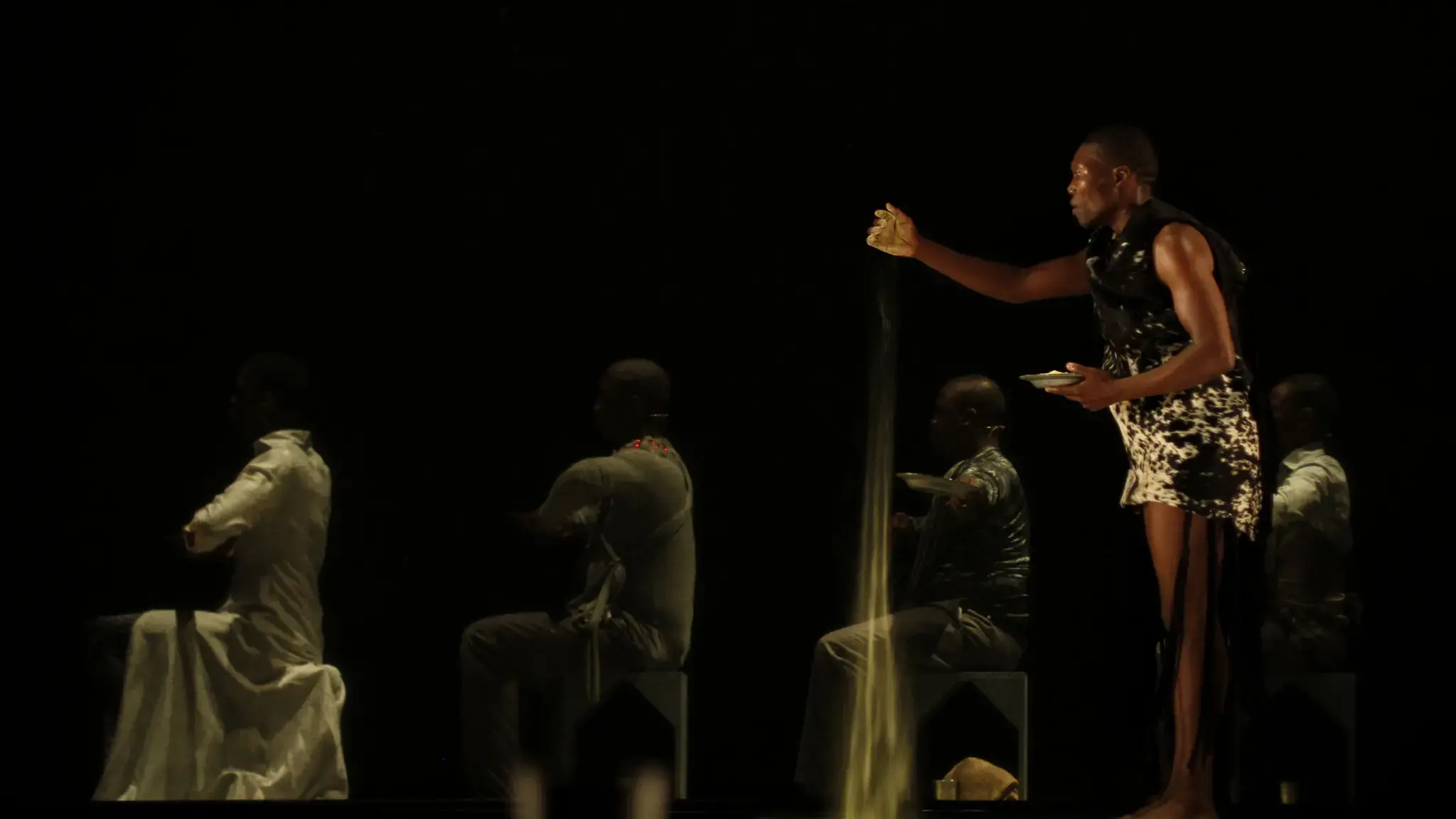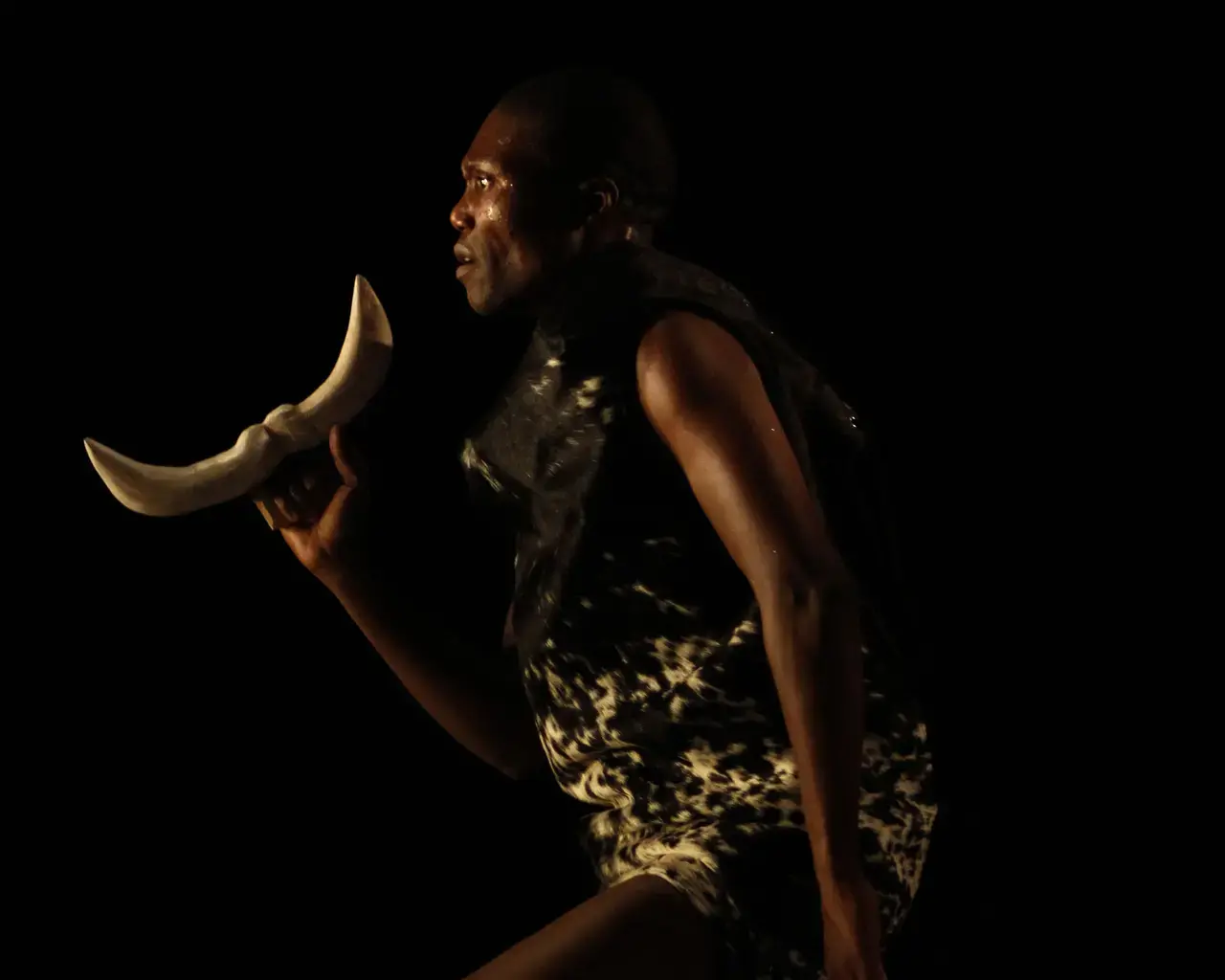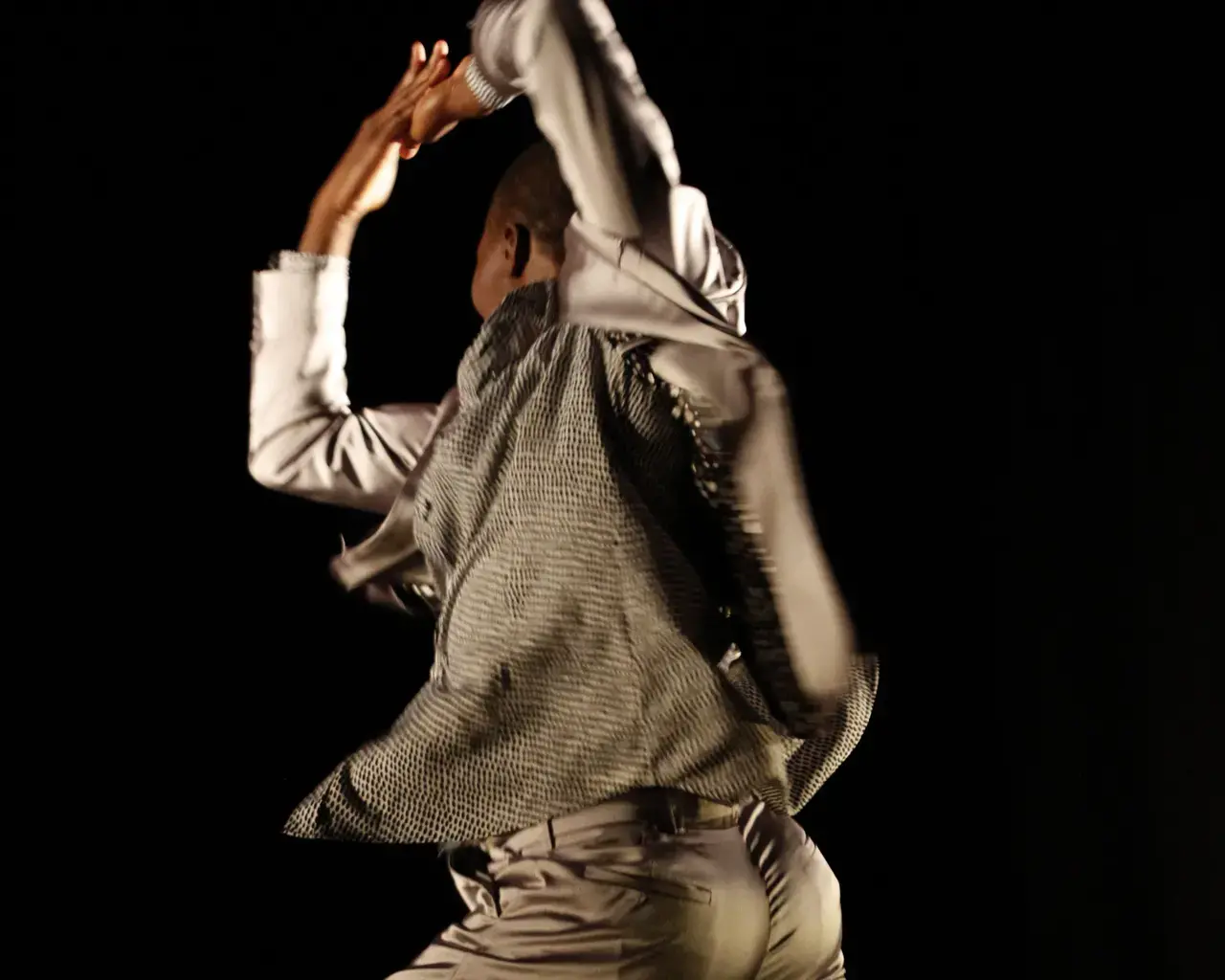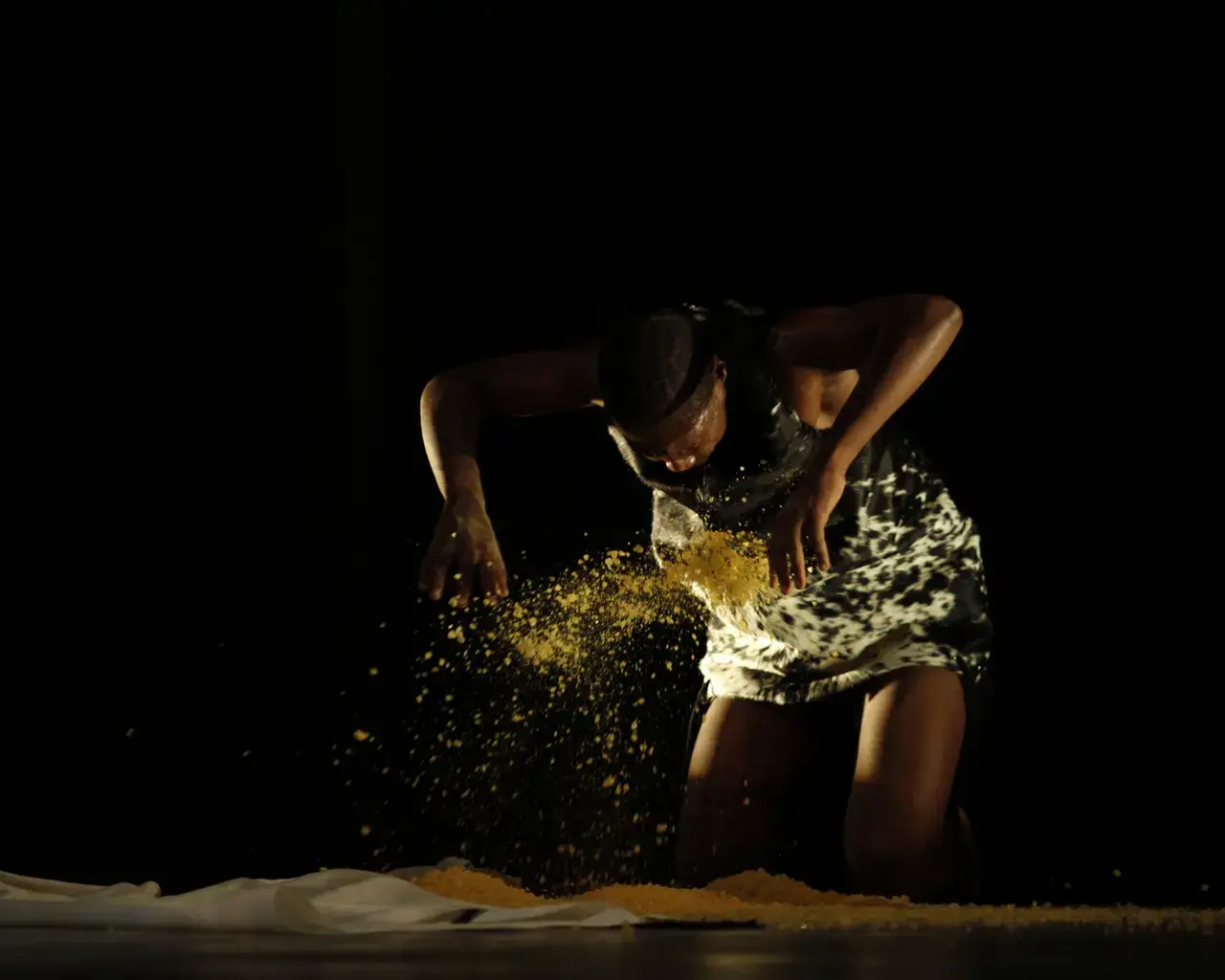In the passage below, an excerpt from dancer and choreographer Gregory Maqoma’s Sentient Archive essay “Exit/Exist – Embodiment,” the artist examines how he translates his ancestral history into performance, rejecting a “conceptual” framework for which descriptions supersede the work itself and instead embracing a historically driven approach. “When our ancestors performed their rituals, dancing around a fire till dawn,” Maqoma writes, “they used rocks and burnt sticks to draw on cave walls what they were seeing while in the trance; memory, intuition and consensus was the driving force.”
The Center publication The Sentient Archive: Bodies, Performance, and Memory is an anthology of essays that illustrate how the body serves as a repository for knowledge, written by a multidisciplinary range of artists and cultural practitioners.
Gregory Maqoma's choreography has earned him numerous awards, including the Chevalier de l’Ordre des Arts et des Lettres Award from the French government in 2017 and FNB Vita Choreographer of the Year in 1999, 2001, and 2002. He also received a Bessie award for the original musical composition of Exit/Exist.
Excerpt: “Exit/Exist – Embodiment”
By Gregory Maqoma
The Body Archive
In many places in the world, people feel that political pressure defines cultural identity in ethnic terms, and cultural diversity in political terms. Cultural identity, however, cannot be defined in terms of race and ethnicity alone. It is a complex subject and it is complicated further by such factors as gender, class, generation, sexual and religious orientation and the tension between tradition and modernity. The body becomes the temple that preciously archives these complexities and they become visible when the artist chooses to bring them out for public consumption.
As artists, we often see things through our personal histories, with their parts rooted in convention and they become subject to the change we desire. These histories come to include reflections on what inspires us to take that first step of discovering their complex nature. Through such reflections I believe we become the mirror to the society we represent, as a result we become political and our identities are formed. With political consciousness, we become aware of who we are and some knowledge of self and place creates a possibility for a discourse; in my case, the body becomes the principal communicator informed by many experiences.
My work fuses mud huts, Internet and different dance forms—all of these make up my form, a cultural cocktail. In my quest to express my true identity, I allow my intuition to be the driving force, the adrenalin that is set in a particular register, which I find hard to pin down to one word or description. When I reflect and try to make meaning, to find words to describe the movement aesthetic my body exudes, the only word I can come up with is ‘architecture’: the landscape that continues to evolve and change, closely related to the earth and affected by its deteriorating nature, a collection of identities, acknowledging the many centuries of social and political heritage. The intuition frees me, and it leaves me with a bittersweet feeling and contradicting emotions. My work is grounded, it gives in to gravity, getting closer to the earth, but at the same time I am consumed with the feeling of taking flight, an escape to the world of the unknown or perhaps the world that my ancestors travelled, embedded in the DNA, my inheritance.
The Architecture of Movement
In the challenging world of contemporary dance, particularly in terms of what is called ‘conceptual art’ where execution of the work is regarded as subsidiary to the idea or concept behind it and in which even the term 'conceptual art' must rely on words rather than art to define itself to the viewer, traditions become meaningless and the very nature of art, particularly the power of the visual and the motional, becomes secondary.
History however tells us something different. When our ancestors performed their rituals, dancing around a fire till dawn, they used rocks and burnt sticks to draw on cave walls what they were seeing while in the trance; memory, intuition and consensus was the driving force. They relied on driving the body to an extent of reaching that point of total submission to the unknown.
When I created Exit/Exist—a contemporary dance work that looks at the history of my ancestor, Chief Jongusobomvu Maqoma, a Xhosa warrior who was born in 1798 and died in 1873 under mysterious circumstances in isolation, held as a political prisoner in Robben Island in Cape Town, South Africa—I became aware of the danger of being trapped within the parameters of ‘conceptual art’.
In my research of the work, I realized that both oral and written history were not enough for me to be able to create a true reflection of my interest in the subject of displacement and colonial disposition. I needed more than a history page to walk his path and rediscover part of my own story in his, the story that I carry within myself. That needed vigorous training in Xhosa tradition, culture and customs, to embody them fully. After days and nights of movement practice in traditional Xhosa dances, dancing in the mountains of Eastern Cape, what emerged was the same concept, only different. I was living the story, no longer telling it but reliving the memory through the visual form, by my body. A sense of ownership emerged; the foundation was stronger to start building the walls for the architecture to come to life.
I realized when I started performing the work that the body can only reveal what it has learned and new information always triggers what lies underneath, the body archive. In creating Exit/Exist, I realized escaping the urban city life and stepping in the redness of the earth of Eastern Cape, smelling the ocean and the fresh breeze of the mountains, instantly separated the theory of the subject from the practice of it. What is interesting is when all the information and ideas start to collaborate and, without making concessions, manage to reach an agreement, creating a new language. A formidable work emerged. Every performance creates new transitional, entry and exit points. Every performance becomes a memory and when the lights go off and the curtain falls, a new history is written.
Edited by Bill Bissell, director of Performance at The Pew Center for Arts & Heritage, and Linda Caruso Haviland, professor and founder/director of the dance program at Bryn Mawr College, The Sentient Archive: Bodies, Performance, and Memory features 28 essays by contributors including Tomie Hahn, Patricia Hoffbauer, Jenn Joy, Ralph Lemon, André Lepecki, Bebe Miller, Juhani Pallasmaa, Marcia B. Siegel, and other notable artists and scholars who consider how and why the moving body generates and stores information for recall, retrieval, or reenactment.












